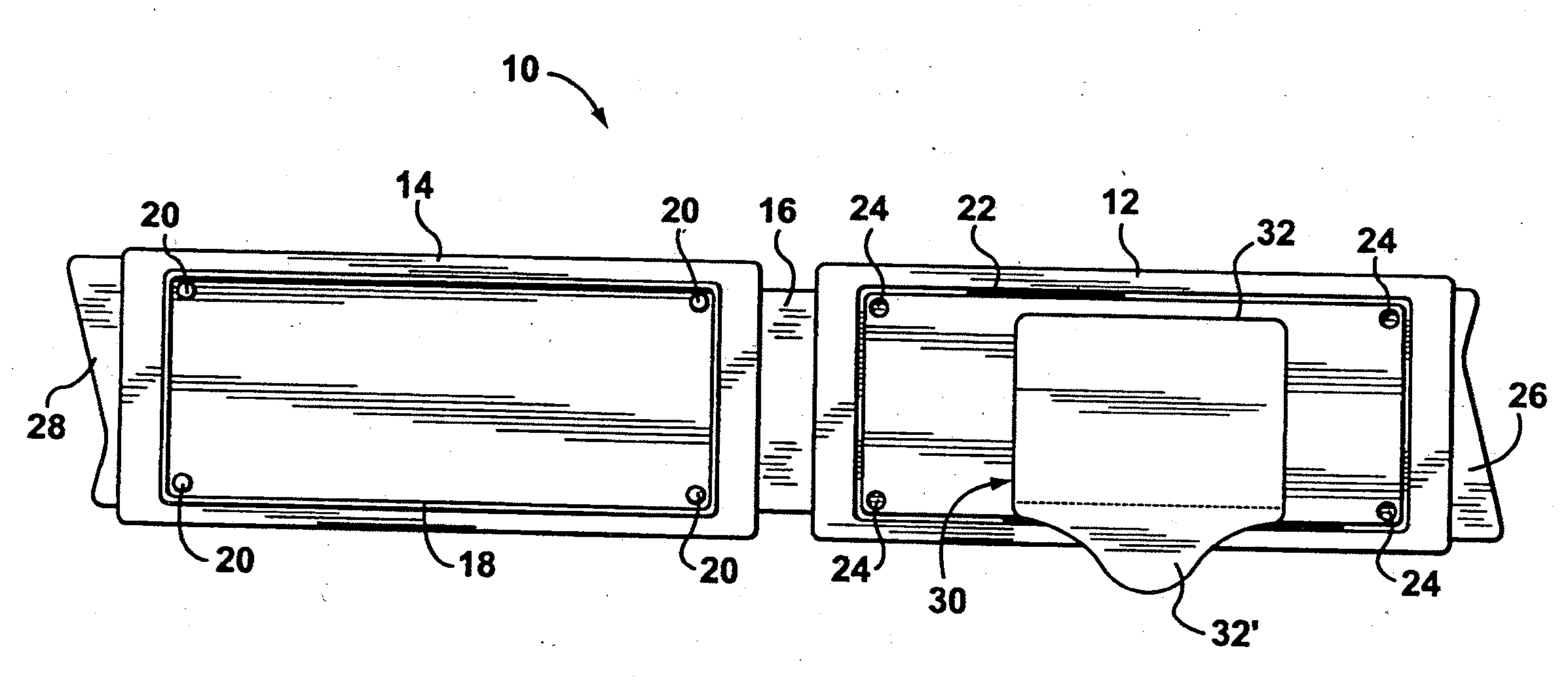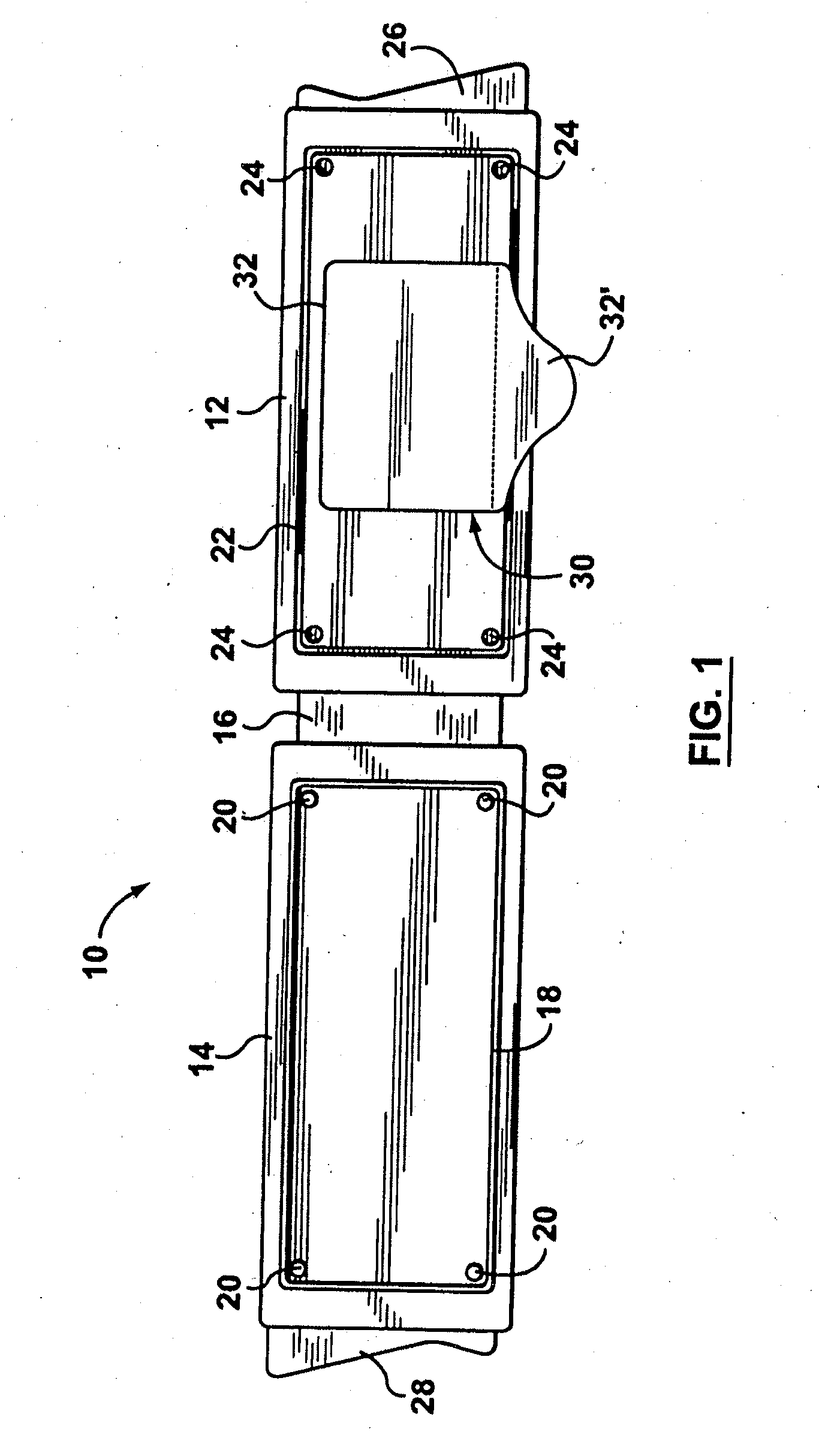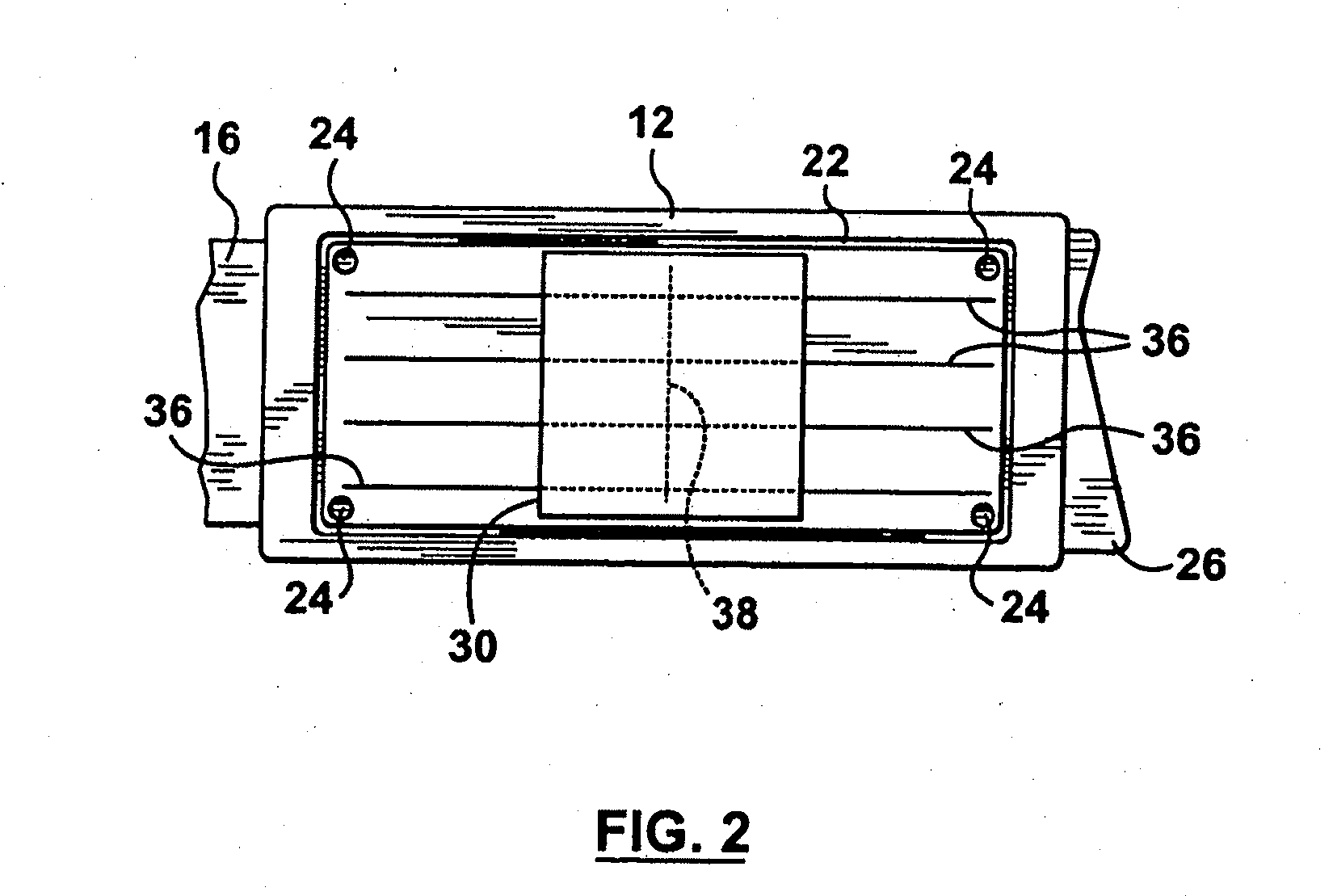Direct assay of cholesterol in skin removed by tape stripping
a skin cholesterol and direct assay technology, applied in enzymology/microbiology equipment, biochemistry equipment and processes, etc., can solve the problems of unable to accurately predict the risk level of patients' total cholesterol, difficult to select the optimal method of discriminating individuals at risk, and difficulty in identifying the optimal method, etc., to achieve effective large-scale screening and simple and non-invasive methods of skin cholesterol measuremen
- Summary
- Abstract
- Description
- Claims
- Application Information
AI Technical Summary
Benefits of technology
Problems solved by technology
Method used
Image
Examples
example 1
[0111]A double-coated pressure-sensitive medical grade tape having a protective release liner on an upper sampling side and sold by Adhesive Research, Inc. was used. A piece of tape 1 inch by 1 inch was cut. The piece of tape was stuck, using the exposed, lower adhesive surface to one end of a 1 inch by 3 inch thin plastic (white polystyrene) member, leaving a 1 inch by 2 inch piece of uncovered plastic as a handle for applying the tape to the skin and for labeling the sample.
[0112]To obtain a skin sample, the protective liner was removed and the exposed adhesive area applied to a clean dry section of skin. Pressure was applied to the back of the plastic member over the adhesive area to effect good contact of the adhesive with the skin. The plastic member with the attached tape and stratum corneum sample was then peeled from the skin.
[0113]The sample was cut into four equal pieces each measuring % inch by ½ inch. One piece was placed in a well of a 12 well tissue culture plate, or s...
example 2
[0114]Use was made of a sampling device as shown in FIG. 1. The sampling device, which is generally designated by reference numeral 10, is formed of plastic (polypropylene) and comprises a sampling member 12 connected to a closure member 14 by an integral hinge 16. The closure member 14 has a peripheral rim 18 and four pins 20, adapted to lock into, respectively, a peripheral groove 22 and four holes 24 formed in the sampling member 12. Folding the hinge 16 causes engagement of the rim 18 with the groove 22 and of the pins 20 with the holes 24, thereby ensuring that the two halves of the device 10 remain closed and sealed to prevent dust and contamination of the interior surfaces. The outer surface (not shown in FIGS. 1 and 2) of the closure member 14 has a flat area for receiving a label and barcode strip, for sample identification. The sampling member 12 and closure member 14 are respectively provided with finger-tabs 26 and 28 for opening the device 10.
[0115]A double-coated press...
example 3
[0120]To allow many samples from Example 2 to be processed together requires that the dipsticks 40 be held in a configuration that matches that of a standard 96 well (8×12) microplate. Instruments are available that can dispense reagents into these plates and also to wash the wells, a requirement that is necessary to prevent reagent carry-over between assay steps. Spectrophotometers that can read the coloured solutions directly in the wells at the final step of the assay are also readily available. However, for such an application, the protruding part of the dipsticks from the wells, and the fixtures that hold them, prevent easy access to the wells for dispensing and washing steps. This results in a dipstick assay that requires customized equipment and / or more manual steps than conventional assays run in microwells.
[0121]Batch processing of many samples can be achieved by removing small disks 50 (see FIG. 4) having skin samples 70 adhered to the adhesive tape 30 from the sampling de...
PUM
| Property | Measurement | Unit |
|---|---|---|
| width | aaaaa | aaaaa |
| concentration | aaaaa | aaaaa |
| diameter | aaaaa | aaaaa |
Abstract
Description
Claims
Application Information
 Login to View More
Login to View More - R&D
- Intellectual Property
- Life Sciences
- Materials
- Tech Scout
- Unparalleled Data Quality
- Higher Quality Content
- 60% Fewer Hallucinations
Browse by: Latest US Patents, China's latest patents, Technical Efficacy Thesaurus, Application Domain, Technology Topic, Popular Technical Reports.
© 2025 PatSnap. All rights reserved.Legal|Privacy policy|Modern Slavery Act Transparency Statement|Sitemap|About US| Contact US: help@patsnap.com



